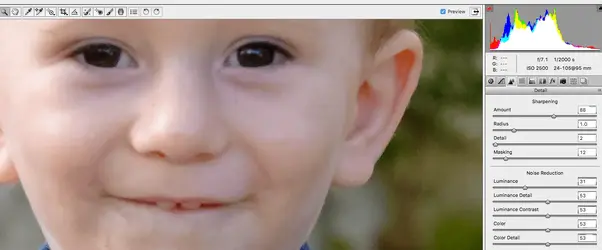alphabyts
TPF Noob!
- Joined
- Aug 15, 2022
- Messages
- 5
- Reaction score
- 1
I am trying to understand if my Nikon D610 is not working as it could. Yesterday I took a ton of photos of my grandson's 4th birthday party in a yard with thin shade (pretty good amount of light), from a tripod at 1600-2000 sec F5.6 to 7.1, for a decent amount of 'action' going on. I set ISO to 200, with auto ISO enabled but failed to reset the limit to 1600 from a previous attempt in poor light of 2500, and it popped nearly every photo to 2500. Even 1600 is too high for good photos, but rather than lose the shot...I used a Sigma 24-105 art lens for the backyard party. I use a single focus point and auto focus and shoot raw, converting to DNG for processing. I manually set everything except lately I have been trying auto ISO with upper limit of 1600. This time I goofed and it was 2500. Almost all of the photos went to ISO 2500 and are poor quality, producing very soft noisy images. The only photos I've EVER taken that came out sharp were in such bright sunlight (beach or cloudless yard) or extremely close and still in bright light. This camera has almost never used 100-200 ISO for auto unless I'm shooting directly into a cloudless sky. In the past, I never enabled the Auto feature for that reason. However I missed a lot of shots due to dark grainy photos. Is this 'normal' -- do other shooters experience this? I just want to understand if I have the wrong expectations of this camera. Images (faces) are bumpy edged and grainy to a point where I cannot even correct them--so I ended up with just snapshots. So many good opportunities lost there - kids coming down the slide, playing in water and sand.






![[No title]](/data/xfmg/thumbnail/34/34052-c6933243940b9ae3474b0a2abaa08312.jpg?1734164460)







![[No title]](/data/xfmg/thumbnail/30/30994-49c5521f7b5b417f49dcd43891cbec27.jpg?1734159066)

![[No title]](/data/xfmg/thumbnail/32/32148-95f8731a01012cd472d3896791e3b7de.jpg?1734161045)